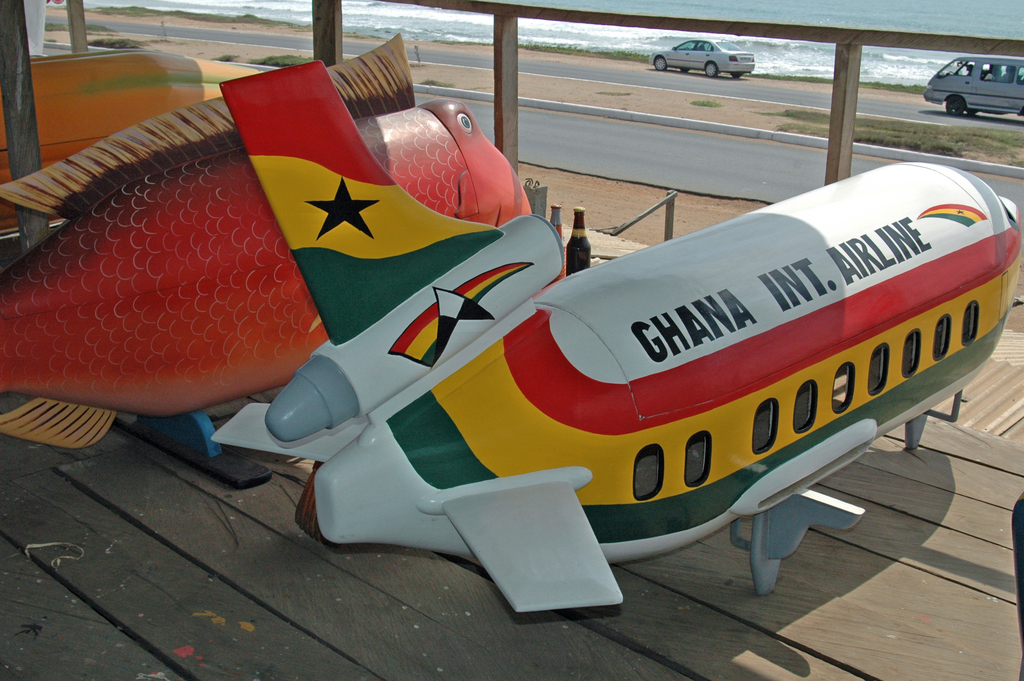Short History of Teshie and Fort Augustaborg
Fort Augustaborg was built by the Danes in 1787, making it the last European fort constructed on the Gold Coast. It was named after Prince Frederick of Augustenburg, a Danish royal, reflecting Denmark’s continued interest in West African trade during the late 18th century.

Click the coffin, to visit the Fantasy coffins page (c) Remo Kurka
The fort was established primarily for trade in gold, ivory, and later slaves, during a time when European powers had created a chain of forts along the coast. Though it came relatively late in the colonial fort-building period, Fort Augustaborg still played a role in the complex system of European presence and commerce in West Africa.

Fort Teshie (c) Remo Kurka - See also RemoKurka.picfair.com
In 1850, Denmark sold all its possessions on the Gold Coast, including Fort Augustaborg, to Britain, which then incorporated it into the British colony.
Today, the remains of Fort Augustaborg still stand in Teshie, serving as a historical site that reflects the lesser-known Danish colonial presence in Ghana. Though not as large or visited as Elmina or Cape Coast Castle, it remains a quiet symbol of Ghana’s rich and complex colonial past.
Construction Timeline and Historical Context of Fort Augustaborg
Confirmed Completion Year: 1787
According to official records from the Ghana Museums and Monuments Board (GMMB) and corroborated by the Danish National Archives, Fort Augustaborg was completed in 1787.
While some secondary sources (notably 20th-century Ghanaian local histories and a few European travel accounts) suggest construction may have begun around 1784, there is no primary documentation confirming activity before 1786. The most reliable sources align on 1787 as the formal year of completion and commissioning.
Who Built It and Why?
The fort was constructed by the Danish Guinea Company, part of Denmark-Norway’s broader effort to secure a stronger trade foothold along the Gulf of Guinea, in competition with British, Dutch, and Portuguese powers.
It was named after Prince Frederick of Augustenburg, a Danish noble, in keeping with the European practice of tying colonial holdings to royal patronage.
Function and Purpose
Fort Augustaborg was designed primarily for trade, including gold, textiles, and enslaved persons, though by its late date, it handled far fewer captives than larger, earlier forts like Elmina or Cape Coast.
Its location at Teshie offered access to a well-established Ga-Adangbe settlement and its coastal trade routes, including salt, fish, and cloth production.
Historical Documentation
Key sources that confirm the 1787 completion date and provide architectural and geopolitical context include:
Ghana Museums and Monuments Board (GMMB) Registry of Forts and Castles
– Lists Fort Augustaborg as completed in 1787, based on in-country archival research and UNESCO documentation.
– See: GMMB site reports, 2019 & 2024 State of Conservation submissions.The Danish National Archives (Rigsarkivet), Copenhagen
– House original construction contracts, cost logs, and correspondence from the Dansk-Guineisk Kompagni indicating building activity in late 1786, with commissioning finalized in 1787.UNESCO World Heritage Serial Nomination Dossier for Forts and Castles, Ghana (2009; updated 2023)
– Confirms 1787 as part of the fort's official documentation submitted for World Heritage consideration.Erik Gøbel, The Danish Slave Trade and Its Abolition (2016)
– Provides contextual background on Danish trade strategy and fort construction in the 1780s, emphasizing the late and relatively modest scale of Augustaborg compared to earlier Danish holdings like Christiansborg.